Concessions
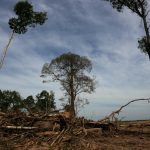
A land concession is a grant of rights over an area of land for a specific purpose. In Cambodia land concessions can be granted for various purposes, including agribusiness, redistribution of land to the landless and land-poor, infrastructure development, mining and fishing. They have been ...
Forest cover
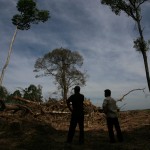
Cambodian forest cover has reduced dramatically in recent decades. In 1973 there were 13.1 million hectares of total forest, but by 2014 the total cover had fallen to 8.7 million hectares. ...
Science and technology policy and administration
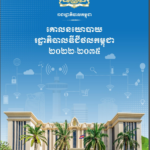
Cambodia has the ambition to transform and digitalize the government system and its economy. The overarching determination comes after the country’s ambitious economic goal of 2050, the readiness to keep up with the region’s science and technology development, and the global megatrend, the fourth industrial ...
Fishing, fisheries and aquaculture
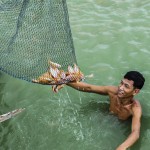
Cambodian fish farmer checking on fish quality. Photo by U.S. Agency for International Development (USAID), taken on 16 October 2012. Licensed under CC BY-NC-ND 2.0.Cambodia’s inland capture fisheries are among the largest in the world. The fishing industry encompasses subsistence, commercial and recreational fishing, as ...
Ground water
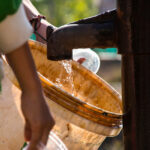
Cambodia relies heavily on its groundwater resources to overcome water shortages during the dry season. More than half of the population depends on it when enough surface water is not available. At a certain depth, the ground is saturated with water, and the upper surface ...
Non-renewable energy production
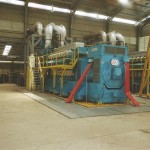
Non-renewable energy sources are chiefly fossil fuels such as coal, diesel, oil and gas. They provide most of Cambodia’s locally-produced electrical supply – in 2011 diesel and heavy fuel oil generators provided 89% of local electricity generation. ...
Agriculture and fishing
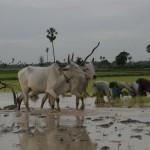
Rice farmers working in the field, Kandal province, Cambodia. Photo by ILO/ Khem Sovannara, taken on 12 July 2007. Licensed under CC BY-NC-ND 2.0.Agriculture continues to play an important role in Cambodia’s economy, but it provides a livelihood for a smaller proportion of today’s population ...
Renewable energy production
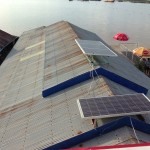
Renewable sources of energy include biofuels, solar, wind, tidal and geothermal energy. Fossil fuels such as petroleum or coal are not renewable. ...
Special economic zones
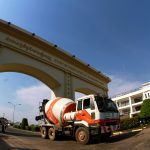
A Special Economic Zone (SEZ) is a defined area within a country that is subject to different laws and regulations than other areas of the country. These comprehensive industrial areas provide preferential incentives to investors and offer government import-export administrative support to facilitate trade. Though ...
Agricultural policy and administration
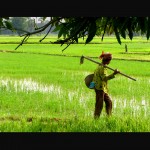
Agriculture in Cambodia accounts for approximately 56% of the labour force. The size of the sector means that policies developed here have a significant impact on the whole country. Agricultural policy and administration is managed by the Ministry of Agriculture, Forestry and Fisheries (MAFF). There ...
Micro-finance
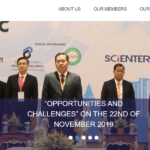
The COVID-19 pandemic has hit global and Cambodia’s economies hard, having a spillover on the stability of the banking system. Banks and financial institutions have continued to provide services to customers, which can be seen through the rise in the number of depositors’ accounts to ...
Environmental impact assessments
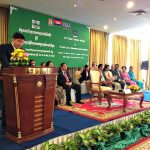
The primary legal requirements for environmental impact assessments (EIAs) in Cambodia are set out in Content II, Book V of the Environment and Natural Resource Code205, Chapter III of the Law on Environmental Protection and Natural Resource Management 1996206(EPNRM Law), and the Sub-Decree no. 72 ...
Private land
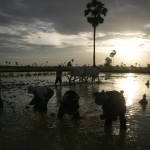
Rights to private land ownership were guaranteed in the 1993 Constitution and formally established by the 2001 Land Law. Despite an established legal framework to protect private property rights, those rights are often insecure for many. ...
Fishing policy and administration
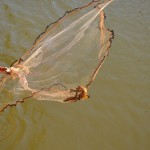
Young man fishing with a cast net on Siem Reap river, Cambodia. Photo by Brian Hoffman, taken on 12 January 2015. Licensed under CC BY-NC-SA 2.0.Fisheries management in Cambodia is divided between central and local governments. At the central level, the Ministry of Agriculture, Forestry ...
Aid and development
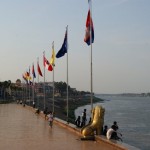
Following the Paris Peace Accords signed in October 1991, Cambodia has received a significant amount of global support for its development and post-conflict work. In 2014, 30 – 40 percent of the country’s national budget is funded through development assistance, placing Cambodia among the most ...
Labor policy and administration
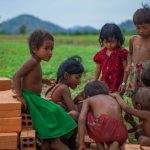
Children working with bricks, Cambodia. Photo by Sodanie Chea, take on 6 June 2013. Licensed under CC BY 2.0Cambodia has a total population of slightly over 15 million, most of whom are under the age of 30. An estimated 250,000 people enter the job market ...
Forest policy and administration
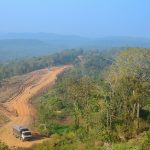
Logging truck in Mondulkiri protected forest , Cambodia. Photo by Global Water Forum, taken on 23 February 2014. Licensed under CC BY-NC-SA 2.0Cambodia is deeply concerned about deforestation. While the country seeks fast economic development, forests represent a tremendous national treasure. In order to help ...
Legal aid providers

Legal aid is provided either by the Bar Association of the Kingdom of Cambodia (BAKC), internationally funded Non-Governmental Organizations (NGOs) and public interest law firms. A special legal team under the supervision of the Prime Minister, aiming to assist impoverished women, particularly those in prison, ...
Agricultural commodities, processing and products
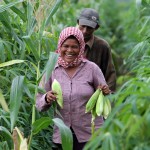
Farmers harvest corn from their farms, Cambodia. Photo by World Bank/Chhor Sokunthea, taken on 17 July 2013. Licensed under CC BY-NC-ND 2.0Key agricultural commodities and products include rice, rubber, corn (maize), vegetables and fruit, and cassava (tapioca). More than 90 percent of Cambodia’s agricultural exports ...
State public land

State public land has a public interest value or provides a public service. The land is inalienable, although it can be leased for limited uses that do not alter or damage its public value. State public land should only be reclassified if the land no ...



